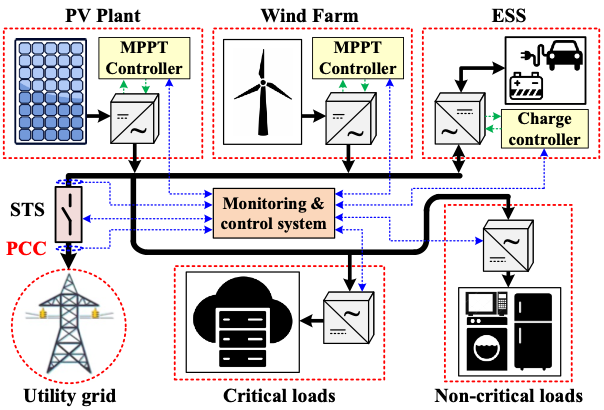Towards Grid of Microgrids: Seamless Transition between Grid-Connected and Islanded Modes of Operation
Authors: Silvanus D’silva, Mohammad Shadmand, Sertac Bayhan, Haitham Abu-Rub
Extended Abstract:
With the ever-increasing number of blackouts in distribution systems arising from a variety of natural and manmade disasters, the frequent and necessary isolation/reconnection of loads without power deviations/fluctuations has become an important issue. Grid of microgrids (MGs) is a promising solution towards a highly resilient and efficient power grid operation. To facilitate this implementation, seamless transition with the utility grid is a key feature today’s MG control scheme need to possess. This transition is of great prominence, especially after the accelerated adaptation of distributed renewable energy sources (RES) in MGs. This ability of the MGs should ensure uninterrupted energy services to critical loads and infrastructures. Thus, the implementation of MG control strategies to enable smooth transition between grid-connected (GC) and islanded (IS) operation modes is mandatory. The control scheme implemented should therefore be capable of mitigating the stirring voltage/current deviations due to frequency/phase misalignment during the transition process. This paper provides an overview of the various MG control schemes that enable seamless transition between GC and IS modes of operation. The main purpose of this paper is to provide a generic overview of the challenges and existing techniques available in literature to mitigate the voltage and frequency (V-f) fluctuations at the MG’s point of common coupling (PCC) and that of the utility grid; during the transition process. It aims at motivating the development of advanced control schemes in this area of MG related research.


